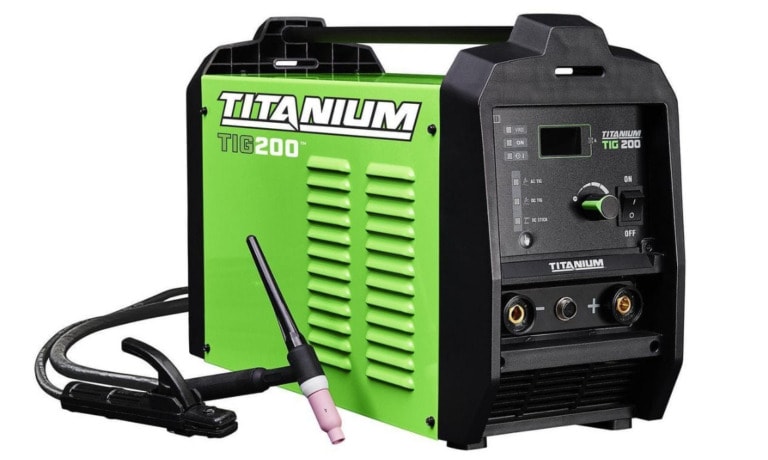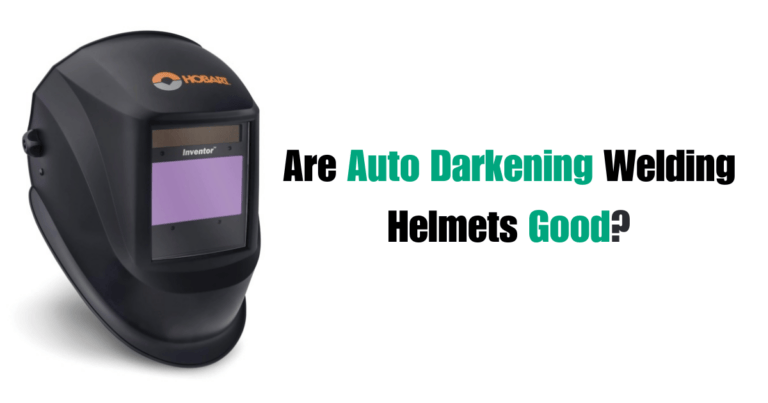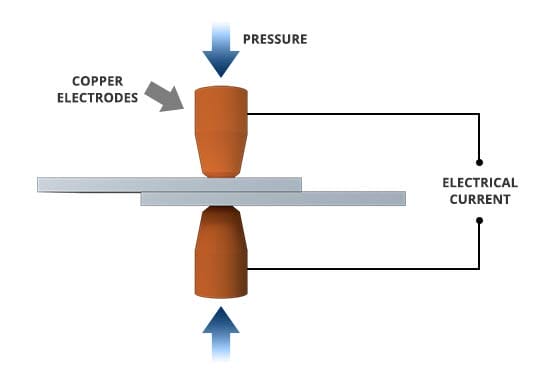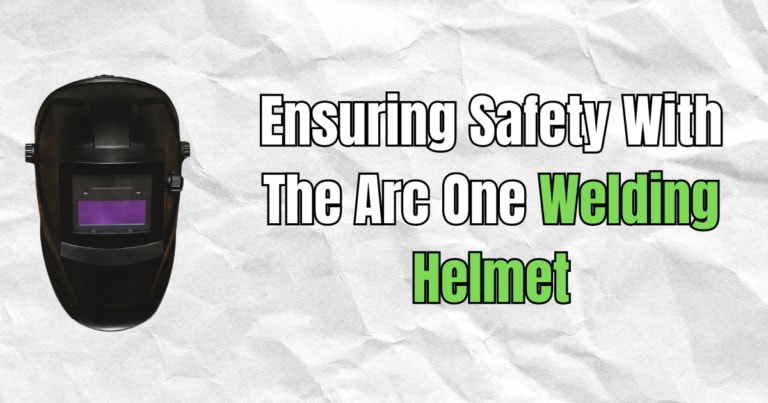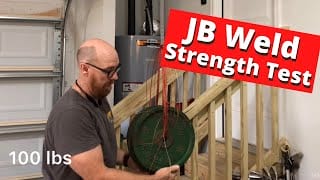
Are you wondering how to remove JB Weld from metal? Well, you’ve come to the right place! JB Weld is a strong adhesive that can be challenging to remove, but don’t worry, we’ve got you covered. In this article, we’ll share some easy and effective methods to help you get rid of that stubborn JB Weld from your metal surfaces.
Removing JB Weld might sound like a tricky task, but with the right techniques, it can be a breeze. Whether you accidentally applied too much JB Weld or you need to take it off for a repair or reassembly, we’ve got the solutions for you. So, let’s dive in and explore some tried-and-true methods to remove JB Weld from metal quickly and efficiently.
But wait, before we get started, it’s important to note that different methods work better on specific types of metal. So pay attention to the material you’re working with and be sure to choose the method that suits your metal surface the best.
Now, let’s move on and discover the solutions to remove that pesky JB Weld once and for all!
How to Remove Jb Weld From Metal? – A Comprehensive Guide
- Prepare the area: Gather safety equipment and ensure proper ventilation.
- Heat application: Use a heat gun or blowtorch to soften the Jb Weld.
- Scraping: Use a scraper or putty knife to remove the softened Jb Weld carefully.
- Sanding: Smooth the surface with sandpaper to remove any remaining residue.
- Clean the metal: Wipe the area with a clean cloth and solvent to remove any leftover residues.
- Repeat if necessary: If there are still traces of Jb Weld, repeat the process until the metal is clean.
Why Remove Jb Weld from Metal?
Before diving into the removal process, it’s essential to understand why you might need to remove Jb Weld from metal in the first place. Here are a few common scenarios:
1. Repairing Damaged Surfaces
If the metal surface bonded with Jb Weld becomes damaged or needs repair, removing the existing adhesive is necessary to ensure proper bonding with new materials. This is particularly important when working on automotive or DIY projects.
2. Modifying or Upgrading
When upgrading or modifying metal parts or components, it may be necessary to remove Jb Weld to allow for new bonding agents or to create a clean surface for welding or soldering. Removing Jb Weld ensures a seamless transition between different materials.
3. Correcting Mistakes
We all make mistakes, and if you accidentally misaligned or bonded the wrong parts with Jb Weld, it’s crucial to know how to remove the adhesive safely without causing damage to the metal surface.
4. Restoring Vintage Items
Restoring vintage metal items often involves removing Jb Weld from various surfaces. Whether it’s for aesthetic purposes or to improve functionality, understanding the appropriate removal methods is essential to preserving the item’s value.
5. Cleaning or Resurfacing Metal
In some cases, removing Jb Weld serves the purpose of cleaning or resurfacing the metal. This can be done to remove stubborn stains or imperfections and restore the metal to its original luster.
6. Recreating Original Finish
If you wish to recreate the original finish of a metal object, removing the old Jb Weld is necessary. This is common in industries such as antiques restoration or metal fabrication, where precision and aesthetics are critical.
7. Salvaging or Recycling
When repurposing or recycling metal, removing Jb Weld ensures that the adhesive does not interfere with the metal reclamation process. By removing the adhesive, you can maximize the value of the metal and minimize waste.
Methods for Removing Jb Weld from Metal
Now that we understand the reasons for removing Jb Weld from metal, let’s explore the various methods you can use to accomplish this task. Depending on the specific situation, different techniques may be more effective and suitable. Here are three commonly used methods:
1. Heat Method
Step 1: Gather the necessary tools and materials
Before starting the heat method, ensure you have the following items:
- Heat gun or blowtorch
- Safety gloves
- Scraping tool
- Metal container for residue disposal
Step 2: Apply heat to the Jb Weld
Applying heat to the Jb Weld surface using the heat gun or blowtorch. Be careful not to overheat or directly expose the metal, as it may cause discoloration or damage. The goal is to soften the adhesive.
Step 3: Scrape off the softened Jb Weld
Once the adhesive has softened, use a scraping tool to remove the Jb Weld from the metal surface gently. Be cautious not to scratch or damage the metal. Work slowly and patiently, scraping off small sections at a time.
Step 4: Dispose of the residue
Collect the removed Jb Weld in a metal container for disposal. It’s essential to follow proper waste disposal guidelines depending on your location.
Step 5: Clean and prepare the metal surface
After removing the Jb Weld, clean the metal surface using a mild solvent or rubbing alcohol to remove any leftover residue. Once the surface is clean and dry, it is ready for further repairs, modifications, or applications.
2. Chemical Method
Step 1: Prepare the necessary tools and materials
Before starting the chemical method, gather the following items:
- Chemical paint stripper
- Polyethylene plastic sheet or plastic wrap
- Protective gloves and goggles
- Scraping tool
- Mild detergent or solvent
Step 2: Apply the chemical paint stripper
Using a paintbrush, apply a generous amount of chemical paint stripper to the Jb Weld surface. Ensure that the surface is covered evenly and completely. Following the manufacturer’s instructions, allow the stripper to sit for the recommended period.
Step 3: Cover with plastic and wait
After applying the chemical, cover the treated area with a polyethylene plastic sheet or plastic wrap. This helps create a barrier and prevents the stripper from evaporating too quickly. Allow the stripper to penetrate and loosen the adhesive for the specified amount of time.
Step 4: Scrape off the softened adhesive
Once the chemical stripper has softened the adhesive, use a scraping tool to remove the Jb Weld from the metal surface gently. Take care to avoid scratching or damaging the metal. If necessary, repeat the process for stubborn or thicker layers of adhesive.
Step 5: Clean and rinse the metal surface
After removing the Jb Weld, clean the metal surface with a mild detergent or solvent to remove any residue. Rinse thoroughly with water and dry the surface before further repairs or modifications.
3. Mechanical Method
Step 1: Gather the necessary tools and materials
Before starting the mechanical method, ensure you have the following items:
- Sanding block or sandpaper (various grits)
- Protective gloves and goggles
- Scraping tool
- Acetone or rubbing alcohol
Step 2: Sand the Jb Weld surface
Using a sanding block or sandpaper with a lower grit, gently sand the Jb Weld surface. Start with a lower grit and gradually move to a higher grit to remove the adhesive layer by layer. Be careful not to sand too aggressively, as it may damage the metal.
Step 3: Scrape off the remaining adhesive
After sanding, use a scraping tool to remove any remaining adhesive. Work carefully to avoid scratching or gouging the metal surface. If necessary, repeat the sanding process and continue scraping until all the Jb Weld has been removed.
Step 4: Clean and prepare the metal surface
After removing the Jb Weld, clean the metal surface with acetone or rubbing alcohol to remove any residue or remnants. Once the surface is clean and dry, it is ready for further repairs, modifications, or applications.
Jb Weld Removal Tips and Precautions
Removing Jb Weld from metal surfaces requires careful attention and proper techniques. Here are some tips and precautions to keep in mind during the removal process:
1. Wear protective gear: When working with heat, chemicals, or mechanical tools, always protect yourself by wearing safety gloves and goggles. This prevents any potential harm from the removal process.
2. Test in an inconspicuous area: Before applying any removal method to the entire surface, test it in a small, inconspicuous area to ensure it does not damage or discolor the metal.
3. Use gentle pressure and patience: Whether using heat, chemicals, or mechanical methods, always apply gentle pressure to avoid damaging the metal. Work slowly and patiently, removing the Jb Weld in small sections at a time.
4. Follow the manufacturer’s instructions: If using chemical paint strippers, make sure to carefully read and follow the manufacturer’s instructions. Each product has its unique properties and recommended application methods.
5. Dispose of waste properly: After removing the Jb Weld, dispose of the waste materials, such as residue, chemicals, or paint-stripped materials, according to local regulations and guidelines. Avoid pouring any hazardous substances down the drain.
6. Ensure proper ventilation: When working with chemicals or in enclosed spaces, ensure proper ventilation to prevent the buildup of fumes or odors. Open windows or use fans to maintain fresh air circulation.
Removing Jb Weld from metal surfaces requires careful consideration and proper techniques. Whether you’re repairing damaged surfaces, modifying or upgrading metal components, or restoring vintage items, understanding the removal methods is crucial.
The heat method, chemical method, and mechanical method offer different approaches to effectively remove Jb Weld. Remember to wear protective gear, work patiently, and dispose of waste properly. By following these guidelines, you can safely remove Jb Weld from metal and achieve the desired results for your project or restoration.
Frequently Asked Questions
When it comes to removing Jb Weld from metal, you might encounter some challenges. But don’t worry, we’ve got you covered! Here are some common questions and answers to help you safely and effectively remove Jb Weld from metal surfaces.
1. What is the best method to remove Jb Weld from metal?
The best method to remove Jb Weld from metal is using heat. You can accomplish this by heating the bonded metal with a heat gun, blow dryer, or torch. Gently heat the area until the Jb Weld becomes soft and pliable, then use a putty knife or similar tool to scrape it off.
Be cautious not to apply too much heat or leave the heat source in one place for too long, as this may damage the metal.
If using heat is not an option, another effective method is to use a solvent like acetone or paint thinner. Soak a cloth or cotton ball in the solvent and apply it to the Jb Weld. Let it sit for a few minutes to soften the adhesive, and then scrape it off with a plastic or wooden tool.
Remember to work in a well-ventilated area and follow appropriate safety precautions when using solvents.
2. Can I remove Jb Weld from painted metal without damaging the paint?
Yes, you can remove Jb Weld from painted metal without damaging the paint, but you need to be careful. One method is to use a heat gun or blow dryer to soften the Jb Weld, then gently scrape it off with a plastic or wooden tool. Take care not to apply too much heat or scrape too vigorously, as this may harm the paint. If the Jb Weld residue remains, you can use a solvent like acetone or paint thinner. Apply it to a cloth or cotton ball and lightly rub the area until the residue comes off.
Before using any method, it’s important to test it in an inconspicuous area to ensure it doesn’t damage the paint. Additionally, always work in a well-ventilated area and follow the manufacturer’s instructions for any solvents or tools you are using.
3. What should I do if the Jb Weld is stubborn and won’t come off with heat or solvents?
If the Jb Weld is stubborn and doesn’t come off with heat or solvents, you can try mechanical methods. One option is to use a wire brush or sandpaper to gently scrub off the adhesive. Start with a soft brush or fine-grit sandpaper and gradually increase the intensity if needed. Be cautious not to scratch or damage the metal surface while removing the Jb Weld.
If mechanical methods are not successful, you may need to consider professional assistance. A metal or automotive repair shop will have specialized tools and expertise to safely remove stubborn Jb Weld without damaging the metal.
4. Are there any precautions I should take when removing Jb Weld from metal?
Yes, there are a few precautions you should take when removing Jb Weld from metal. First, always wear gloves to protect your hands from any chemicals or sharp tools you may use. Additionally, work in a well-ventilated area to avoid inhaling any fumes from solvents.
When using heat, be cautious not to overheat the metal, as this can lead to discoloration or damage. Follow the manufacturer’s instructions for any solvents or tools you are using, and test them on a small, inconspicuous area first to ensure they don’t cause any unwanted effects on the metal.
5. Can I reuse the metal object after removing Jb Weld?
Yes, in most cases, you can reuse the metal object after removing Jb Weld. Once the Jb Weld has been successfully removed, ensure that the surface is clean and free of any residue. You may need to sand or polish the metal to restore its original appearance.
If the metal object had been subjected to high heat during the removal process, such as with a heat gun or torch, it’s important to inspect it for any potential damage. Ensure that the metal hasn’t warped or lost its structural integrity. If there are any concerns, consult a professional or replace the object if necessary.
Removing J-B Weld from metal can be done using heat or a chemical solvent. Heat can soften the adhesive, making it easier to scrape off with a plastic or wooden tool. Be careful not to damage the metal surface. Acetone or nail polish remover can dissolve J-B Weld, but be sure to test on a small area first and work in a well-ventilated area.
Remember, when removing J-B Weld, patience is key. It may take multiple attempts and some trial and error to successfully remove the adhesive. Always follow safety precautions and take your time to avoid damaging the metal.

